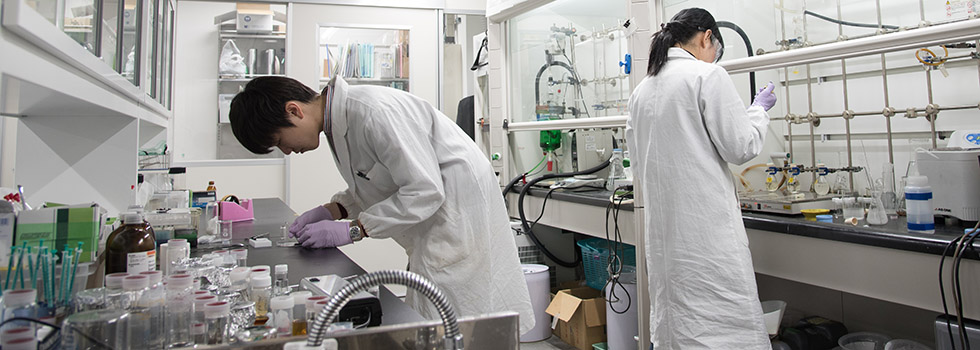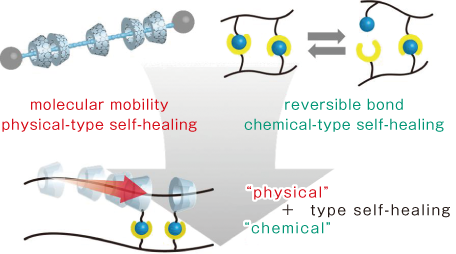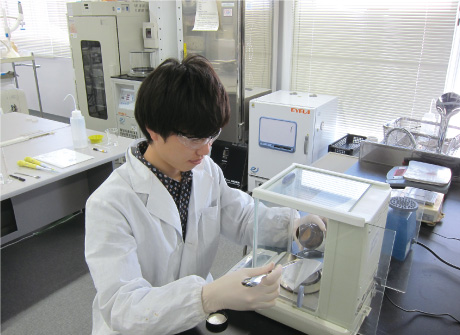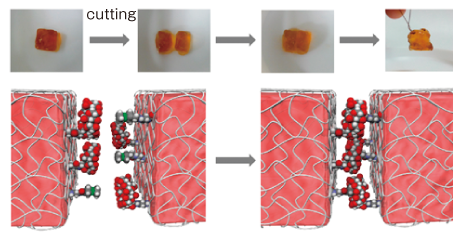
Research and development for tough fracture-resistant and self-repairing materials
Synthetic polymers and other soft materials are now ubiquitous in everyday life, serving as foods, products, and materials, and the development and practical application of higher-performance materials will be essential for the achievement of a more sustainable society. In this project, as part of the Cabinet Office ImPACT program for “achievement of ultrathin membranous and tough ‘supple polymer’”, we are performing research and development aimed at the creation of tough fracture-resistant materials and materials with self-repairing function.
FEATURE
Enabling practical development of tough polymeric materials for much lighter products with significantly increased product reliability and safety. We aim at the development of materials with the capability for self-repair in the event of fractures in order to create longer-life products. We are also developing a method for producing direct inter-material bonding reactions without the use of adhesive agents.
RESULTS
Research progress
Cyclodextrin cyclic molecule
Cyclodextrin is a cyclic molecule that can subsume various hydrophobic molecules in its interior, in what is known as host–guest interactions. We have already obtained a sharp increase in toughness by incorporating cyclodextrin and a hydrophobic group into the polymer side chain and by using the host–guest interaction as a crosslinking point to produce a gel. This material also exhibits a strong self-repair capability.
Further development
Elucidation of the relationship between the mechanical properties and crosslink structure and optimization of the material structure based on those findings
We elucidated the relationship between the mechanical properties and the crosslinked structure with the gel as a model substance and have sought to optimize the material structure based on these findings. With the conceptual field including entanglement of the polymers and a sliding crosslink point using the clathrate compound of polymers and cyclodextrin (rotaxane), we created conjugations with other materials in order to obtain further toughening. We then utilized these findings to attempt polymer toughening and self-repair in the solid state as well as in the gels.


